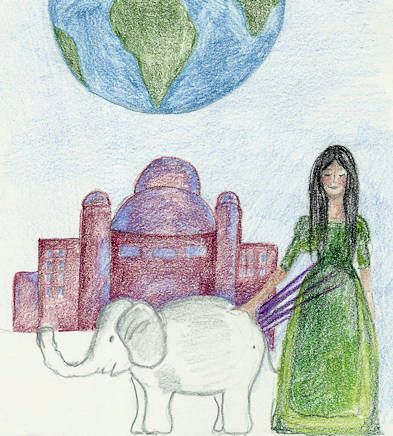
Queen Maya dreamt that she was carried by a cloud into a great palace in the sky.
Drawing by Jaclyn Allavie, Eleanor Roosevelt College (UCSD), Class of 2009, by permission

Kapilavastu was ruled over by a king of the Gautama clan of the Shakya (Śākya) tribe, His name was Shuddhodana (Śuddhodana). His wife was named Maya (Māyā), which means “illusion.” Although the two had been married for a time, Queen Maya remained a virgin.
One day an angel looked down upon the earth and saw that it was full of suffering, and knew that it was time to send a child to be a buddha, who could teach people the way to avoid suffering. Some say that the future buddha, already a bodhisattva, was waiting in the tushita (tuṣita) or “happiness” heaven, where bodhisattvas wait to become buddhas, and that, looking down, the future buddha, selected the perfect parents for his next incarnation.
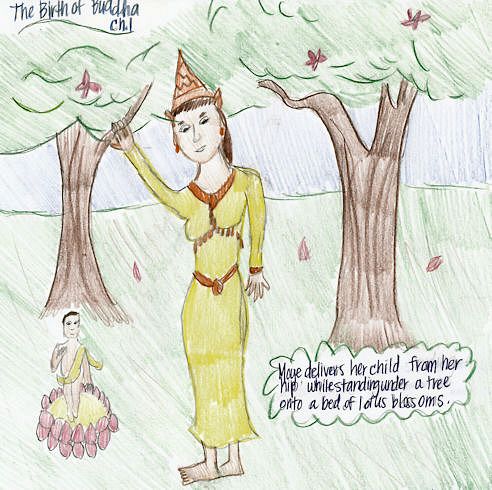
Therefore, one day Queen Maya dreamt that she was carried by a cloud into a great palace in the sky, where a white elephant magically entered her side.
Sometime after this odd dream, she realized that she had become pregnant. When she had been pregnant for ten months and it was time to give birth, she received the king’s consent to return to her native town for the delivery. That town was called Devadaha, and it was ruled over by her father, King Anjana (Añjana).
On the border where the territory of Kapilavastu adjoined the territory of Devadaha there was a beautiful area called the Lumbini (Lumbinī) Garden,
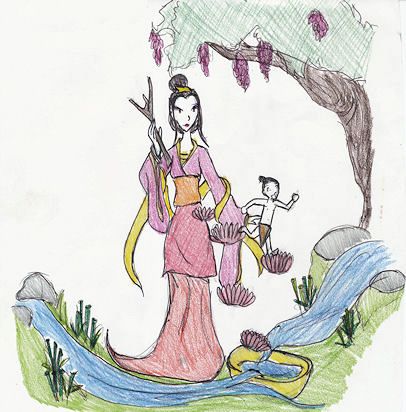
It is said that he was born from her hip onto a bed of lotus blossoms.
Drawing by Lan-Anh Pham, Sixth College (UCSD), Class of 2011, by permission
about 15 miles from Kapilavastu, where people from both realms yearly joined in spring celebrations beneath a giant shala (śāla) tree. The shala was a species known for its great beauty, its strong lumber, and its fragrant flowers and incense, and so it made an excellent place for friendly celebrations.
When Maya reached the Lumbini Garden, she stopped to rest. Some say it was the 5th day of the week on the 15th day of the 6th month of the year by the local calendar, others the 8th day of the fourth month. It is celebrated in China between the two: in the 5th lunar month. The year is also unclear. Some scholars say 563 BC, but Buddhist tradition places it earlier, and some evidence suggests a date of about 500 BC.
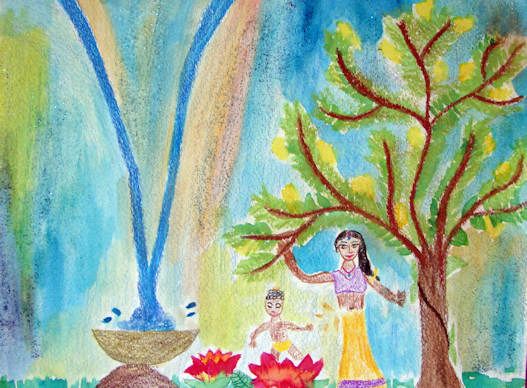
Queen Maya did not reach Devadaha. It was in the Lumbini Garden that she delivered her child. And it is said that she delivered him while standing under a shala tree holding a branch with her right hand, and that he was born from her right hip onto a bed of lotus blossoms. And it is also said that two streams of water poured down to the earth into a golden basin that arose from the ground so that the newborn child could be bathed.
He already had the form of a small child rather than a baby, and could already walk, and he knew of his earlier incarnations upon this earth. He walked for seven steps, leaving seven lotus prints where he stepped. He could already speak several languages and had the voice of a lion. He declared that he would find salvation.
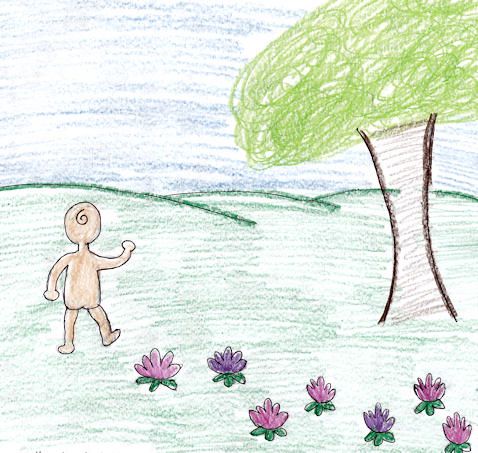
Far away to the southeast, near Rajgaha (Rājgṛha), the Magadha capital, and near Bodhgaya (Bodhgayā, modern Gaya) in northern India, there was a forest of papaya trees, called the Papaya Forest, which was also called the Forest of Mortification because ascetics practiced austerities there.
At the moment of the Buddha’s birth in the Lumbini Garden, a fig tree suddenly sprouted in the Forest of Mortification. The fig tree was destined to shelter the Buddha when he attained enlightenment, and fig trees of this kind have been known as enlightenment (bodhi) trees ever since.
Queen Maya and the little prince, then slowly made their way back to Kapilavastu, where the king received the news of his son’s birth with great delight.